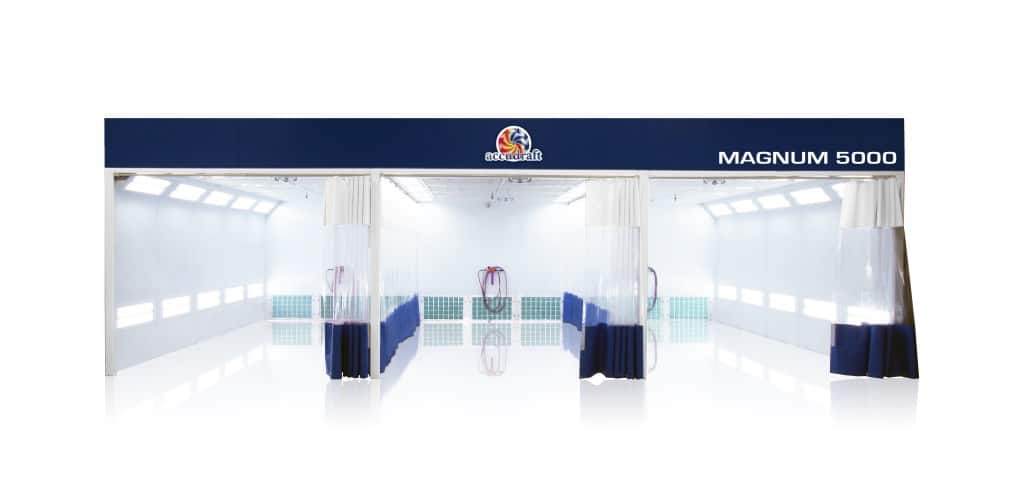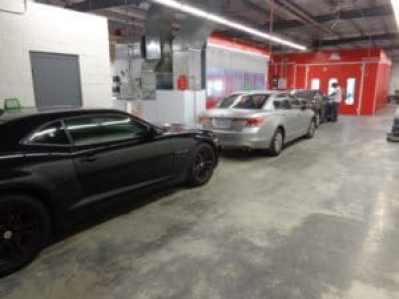
As you probably know, your paint booth filters play an important role in keeping your workspace clean and free of dangerous fumes. Did you know that filters also play a role in helping you create a high-quality finished product? Even if you own one of the most advanced paint booths on the market, high-tech automation systems and advanced spraying mechanisms won’t protect you from the wrath of dirty filters.
Your paint booth’s filter plays an important part in keeping your air filtration system working at maximum capacity. This means that your filter plays a part in removing toxic fumes and vapors, as well as quickly extracting dust, debris, and other potential contaminants from your paint booth.
Working with a dirty or old filter means that your air filtration system isn’t working to its maximum efficiency. Not only does that compromise the safety and health of you and your coworkers, it also increases the chances of your finished product looking unprofessional because of contamination and overspray.
Furthermore, dirty filters can make your ventilation system work twice as hard. This could cause serious problems later on, and could even cause your system to fail. For this reason, keeping up-to-date with the maintenance of your paint booth filters is an essential part of optimizing your workspace.
Your brand new paint booth should come with a warranty that covers parts and labor. The amount of time that your booth’s covered under warranty varies by company, and Accudraft paint booths are typically protected for one year with the option of extended warranties. With that said, you need to come up with a strategy to keep your paint booth strong and healthy after its warranty expires.
It’s no surprise that paint booths are an expensive investment. That is why you want to perform routine maintenance and keep your booth running at its best. Not paying attention to your booth’s filters and air circulation system is a sure way to put unnecessary stress on your booth’s working parts. This could cut its life short or cost you a lot of money in repairs over time.
Fortunately, giving your paint booth the maintenance it needs isn’t difficult, and only requires a little bit of time and effort. Part of having good maintenance habits is routinely changing your filters, even if you’re not running a high-volume operation. Here some things to know about maintaining your paint booth filters:
While it’s true that your paint booth filters should be changed after a certain length of time – and the length depends on which filter it is – there are also other factors to consider when evaluating the life of your paint booth filters.
The biggest culprit of filter wear-and-tear is excessive usage. Most filters come with a recommended number of hours, which is how companies come up with the number of weeks or months a filter is reliable for. So it’s natural to expect that a paint booth that has been working around the clock will have filters that expire faster than others. Also, you remember that every paint booth utilizes the same filtration system. If you’re running two paint booths, that’s putting double the work hours on your filters.
Another thing that’s damaging to filters, which you might not have known, is the quality of air inside and outside of your workshop. If you work in an environment with low air quality, whether it’s from dirt, smoke, sand, or various other factors, your filters are going to work twice as hard. One customer who worked near a quarry went through filters every couple of weeks, when they should’ve been lasting for a few months. This was because of all the dirt and debris in the air.
If you happen to go through filters at an alarmingly fast rate and you’re certain that the air in and around is clean, you might have a problem with your paint products. Some sprays are heavier than others, which causes filters to get clogged twice as fast as they should.
When you work around paints for long periods of time, you’re exposing yourself to a number of toxic chemicals. Excessive exposure to fumes and vapors can make you feel dizzy and sick. Overtime this will increase your chances of developing cancer and other illnesses. This is why it’s critical to have a work environment that promotes safety and has proper ventilation, as these two components will protect you from dangerous chemicals.
Remember, a paint booth that’s using clogged filters won’t do a good job of extracting dangerous chemicals. This places you and your coworkers’ lives at risk. A good way to promote safety in the work environment is to routinely check the filtration systems and always replace them after they’ve reached their expiration dates.
Furthermore, an added bonus that comes with keeping your paint booth filter’s updated is that you’re able to enjoy a cleaner workspace. Nobody wants to prep and paint in an environment that’s covered in overspray, paint specks, dirt, and debris. Overstrained air filtration systems aren’t going to efficiently collect and extract these contaminants. Ultimately, this is why air filter maintenance is also crucial for promoting a clean work area.

The whole purpose of owning a paint booth is to be able to work more efficiently and get more accomplished. Working with old and dirty filters will inhibit this from happening, and can greatly hinder your progress. Finished layers of paint tarnished with dirt, smudges, and overspray imperfections commonly occur in paint booths with expired filters. This is why filter maintenance isn’t only imperative, it’s arguably the most important task on the checklist.
Did you know that clogged filters can also affect your drying time? If you think about your filters as a quintessential part of your air circulation system, it’s not hard to see why. Clogged filters block the flow of air. This subsequently overworks and slows down the ventilation system as a whole. Heated and circulated air is then restricted, or in some cases blocked completely, and this can have a negative impact on your production time.
There are a lot of things to consider when shopping around for paint booth filters. Ultimately, you’re going to want a filter that offers the following:
When shopping around, you also need to make sure that any new filters are compatible with your paint booth system. If you’re unsure then contact your booth’s manufacturer and ask which paint booth filters they recommend for your system.
Another thing to remember is that there are three types of paint booth filters commonly used:
You’re going to want to do some basic research before buying your first set of replacement filters. First, you need to look at your paint booth and determine what type of filters it needs. If you’re unsure then contact a representative and ask for assistance.
Remember, not all booths have the same filtration system. Downdraft paint booths, for example, tend to work best with an intake filter built from high-grade polyester. This is why you should view your owner’s manual or consult a licensed technician before installing new paint booth filters.
Is it time to change those filters on your paint booth? If you need help locating your old filters and finding new, durable and effective ones, contact the Accudraft team.
Accudraft is one of the industry’s top leaders in paint booth technology and has been employed in automotive shops and industrial projects around the United States. If you’re interested in buying a new paint booth for your workspace, have a look at their equipment and then reach out to one of their friendly representatives to get started.